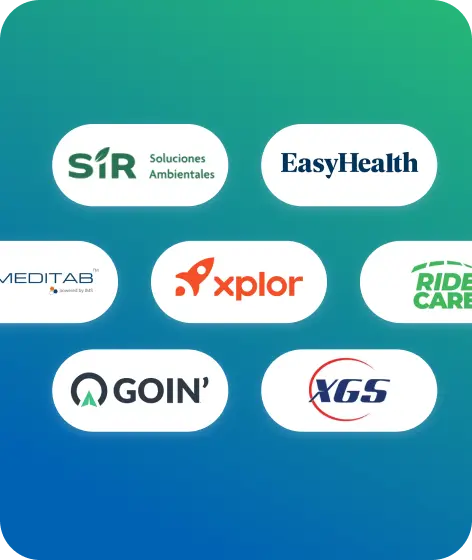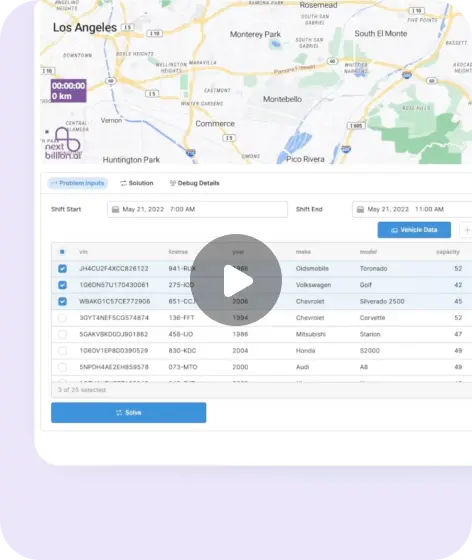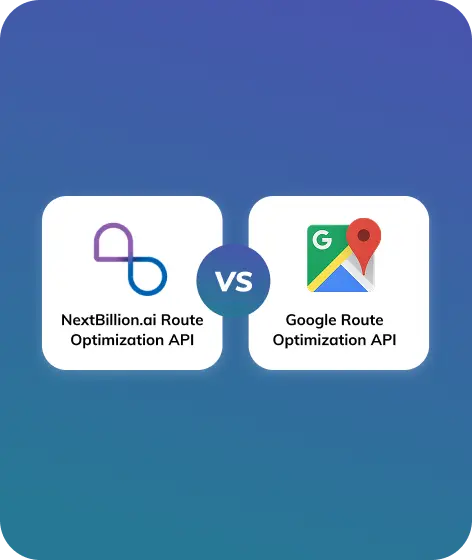Due to the rise in demand for home deliveries and the growth of e-commerce, the courier business is very profitable. The courier service market will grow at a 12% CAGR from 2017 to 2025 and reach $326.32 billion by 2025.
Right now is the best time to start if you want to become a courier delivery service. But don’t worry—we’ll help you if you don’t know where to begin or what investments you may need to make. Here are 9 steps with full instructions on how to start a courier business.
Now let’s begin
How do You Run a Courier Business?
As part of their service, courier businesses deliver packages and parcels for small businesses, retailers, and brands. A courier service usually charges a fee to deliver packages and letters at a set rate. There are several things that affect the price, such as
- The number of parcels
- How much do packages weigh
- How far it take to deliver
A Step-by-Step Guide to Start a Courier Business
It’s important to know where to start before you start a courier business. Here are the steps you need to take to start your own courier service.
1. Decide what kind of courier service you want to run
Picking a niche is the first thing you need to do to start a courier service. The courier service business is very big, and they offer many different kinds of services. For new businesses, it might not be possible to offer services in all categories at first. So, before starting a new courier business, you need to figure out who your niche or target market is.
These are some types of delivery services:
- Standard Delivery Service
When you choose standard delivery, the courier will get to its destination in two days or more. If you don’t need the order right away, this is the best and cheapest way to do it.
- Delivery on the same day
People are most interested in this type of delivery. But same-day delivery is just as hard to pull off.
- Fast Shipping Overnight
Most of the time, this type of courier service is open from 8 am to 5 pm. Courier companies don’t take on new orders after 5 p.m.; instead, they focus on getting packages where they need to go. But with overnight delivery, you don’t have to worry about time limits.
In some cases, businesses that can’t get their packages delivered during busy times may benefit from overnight delivery. Businesses that move heavy things and building supplies are one example.
- Delivery on demand
Even faster than same-day deliveries are on-demand deliveries. For customers who need their orders right away, on-demand is the best choice. People don’t have to wait more than 30 minutes for delivery. Orders are delivered this way in 4 hours or less.
2. Make a plan for your business
Once the niche has been chosen, the next step is to make a well-thought-out business plan and put it into action. To make a business plan, you need to do a lot of research on the market and write down your main goals for the business.
In the business plan, some of the most important things you should think about are
- Target possible customers
- Plans for marketing
- Prices and costs of services
- Follow the rules and regulations
- Money to buy and run things
3. Figure out the costs of running the business
The next most important thing to do when starting a courier business is probably figuring out how much it will cost to run. You make a good point when you ask how much it would cost to start a courier business. If you want to start a courier delivery service, it would help if you had a lot of money. Some of the costs that you should save money for are:
- Administrative fees cover things like registering a business, getting a building permit, getting a license, and more.
- Brick-and-mortar stores have to pay rent and utilities.
- Transportation, tools, and regular upkeep for vehicles are all things that will be needed.
- Marketing and advertising, as well as the costs of making and maintaining a website.
- It is important for businesses to use technology like route optimization and delivery management to keep their operations running smoothly.
- Pay for workers.
4. Put money into things you need
To start a courier delivery service business, you need to buy things like vehicles and warehouses. To store and send couriers, you will need a warehouse.
Vehicles are very important in the last-mile delivery business. It’s used to move packages and goods from one place to another. Deliveries of varying sizes or weights need different types of vehicles, like bikes, cars, or van delivery trucks.
Whether you buy or lease these vehicles will depend on your business model, budget, and long-term goals, among other things. Here are some things to think about:
Pros and Cons of Buying: Buying a car gives you full control and ownership. To change and use them however you want, you don’t have to worry about breaking the lease. The initial cost is high, though, and you’ll have to pay for repairs and maintenance.
Pros and Cons of Leasing: When you lease a car, you pay less upfront, but you have to pay for maintenance services more often. Because of this, you can also get newer models every few years. One problem is that you won’t own the cars when the lease is up, and there may be limits on how much you can drive and how much wear and tear they can take.
5. Take care of the legal stuff
It’s not easy to run or start a courier business. Before you can start your courier businesses, you need to take care of a lot of legal paperwork and get licenses. However, the legal steps you need to take depend on where you plan to run your courier business.
Here are some common licenses that you might want to get:
- Business License: Basically, every business needs a license to run legally. The best place to find out what you need to do is to talk to the business department of your local government.
- Registration and Insurance for Your Vehicles: State laws say that your courier vehicles need to be registered and insured. The type and size of deliveries affect the cost of commercial vehicle insurance.
- License for Couriers: Some cities or states need a special license for couriers or delivery people. You can find out if you need this license from your local government or the Department of Transportation.
Important: If your courier service is going to deliver dangerous items, you should also get an application, permit, or license for that.
- Zoning permits: If you want to run your delivery business from a certain place, you will need to apply for a zoning permit. The rules about zoning can affect whether or not you can run a business from a certain spot.
It is important to remember that not getting the right permits or licenses can result in fines or legal problems. Eventually this stops you from running your business.
6. Hiring workers and teaching them their jobs
You will need to hire workers and riders for back-office tasks and delivery work. To start the process, you will need to look over the applicants and hire the best ones who fit the job description. Here are some ideas on how to hire people and teach them:
- When hiring drivers, look for people who are customer-focused, have a clean driving record, and are great at managing their time. The most important thing is to make sure they have a driver’s license.
- Hiring Administrative Staff: These people will be in charge of customer service, scheduling orders, billing, and other office work. Look for people who are good with technology, pay attention to details, and keep things in order.
- Training: How well you train your employees is directly related to how well your business does. This could include training in customer service, safety, and getting drivers used to the routes you’ve chosen. People who work in customer service should learn how to deal with complaints and make sure customers are happy, but people who work in administration will need to learn about your systems and procedures.
- Staff Management: To keep track of schedules, riders, and communication within your team, you might want to use software with rider roster. Checking in and getting feedback from your team on a regular basis can help you deal with problems quickly and keep them motivated.
7. Spend money on the right tech
Getting the right technology for your courier business can make all the difference. Tools for courier delivery can make things run more smoothly, get more done, and make customers happier and more satisfied. These technologies can help your courier service stand out from the rest:
- Courier Delivery Software: This all-in-one program can schedule transport, send packages, keep track of them, and more. For easy order management, look for software that can connect to your website.
- Route Optimization Software: A courier company needs to be able to plan routes quickly and efficiently. Software that optimizes routes uses complex algorithms to find the best ways to deliver packages, which saves time and fuel.
- GPS Tracking: With GPS tracking, you can see where your delivery people are at all times. This can make drivers safer, keep people from breaking the rules, and give customers accurate delivery estimates.
8. Come up with good marketing plans
Businesses need to keep customers coming back if they want to do well. This is something that strategic marketing can do. Your target market will know exactly what you’re selling if you have a well-thought-out marketing plan. Here are some ways to make a marketing plan that works:
- Figure out who your target market is: Make sure that your marketing plan fits the wants and needs of your target audience. Try to explain how your courier services can help with this issue.
- Take advantage of your unique value proposition. Use the things that make your business different from the others. This is what your marketing plans should be built around.
- Pick the best marketing channel. There are many marketing channels, but not all of them will work for you. The best places to advertise are on Google Ads or social media. The best things to use for email and content marketing are blogs and articles.
- Develop a strong online identity: Having a website that looks good and being active on social media will help your online identity. SEO will help your website get a higher ranking, which will make it easier for people who might buy from you to find you.
9. Put customer service and support first
“Customer satisfaction” is the last thing that should be your main focus. In the very competitive courier business, great customer service will definitely help your company stand out. Here are some things you can do to make your customers happy.
- Deliver on Time: In the courier business, getting things delivered on time is very important. Even though you should try to be on time, sometimes things take longer than planned. Get in touch with customers quickly.
- Clear Communication: It’s very important to let customers know what’s going on with their order as soon as it ships. Let customers know about the status of their order in real time by using tracking links and notifications.
- Offer a Way to Solve the Problem: Even with perfect planning, problems will still happen. The best way to handle them is quickly and professionally. The best thing to do is to pay attention to what customers say and fix the problem.
- Always ask for feedback from your customers. You can do this by sending them surveys or just asking them what they thought about the delivery. This feedback will help you make your services better.
- Train your Staff: Make sure that every rider or team member knows how important it is to keep customers happy. Teach your employees how to deal with customers, make deliveries quickly, and solve problems.
Why NextBillion.ai for Courier Delivery Business?
NextBillion.ai offers custom routing solutions to streamline your logistics and supply chain operations.
We offer a suite of location technology products that can be used by courier delivery businesses to streamline their operations. Let’s have a look at some of our hero products:
Distance Matrix API
NextBillion.ai’s Distance Matrix API lets you plan your fleet more efficiently from the first mile to the last mile. It supports a 5000×5000 matrix size and can integrate live traffic data, which helps you make accurate ETAs and efficient routes between all possible points of interest (POIs), like warehouses, distribution centers, customers’ locations, and dispatch vehicles. A matrix this big makes planning quick and easy, and it also makes scaling easy while keeping costs low.
Route Optimization API
The Route Optimization API can help you get better at using your assets, batching orders, and sending them out. We use our Route Optimization API to help you make smart assignment decisions by taking into account all business variables, such as vehicle capacity, time windows, service duration, skills, and many more. For smart matching and dispatch, the algorithm figures out the best vehicles, service staff, and order of tasks.
Navigation SDK
The Navigation SDK makes sure that deliveries happen quickly, safely, and on time.
Help drivers by giving them clear, step-by-step directions, lane-level guidance, speed limits, and more in the app. Give them accurate delivery location data to help them get around roads quickly and finish their work on time.
Book a Demo Today!




